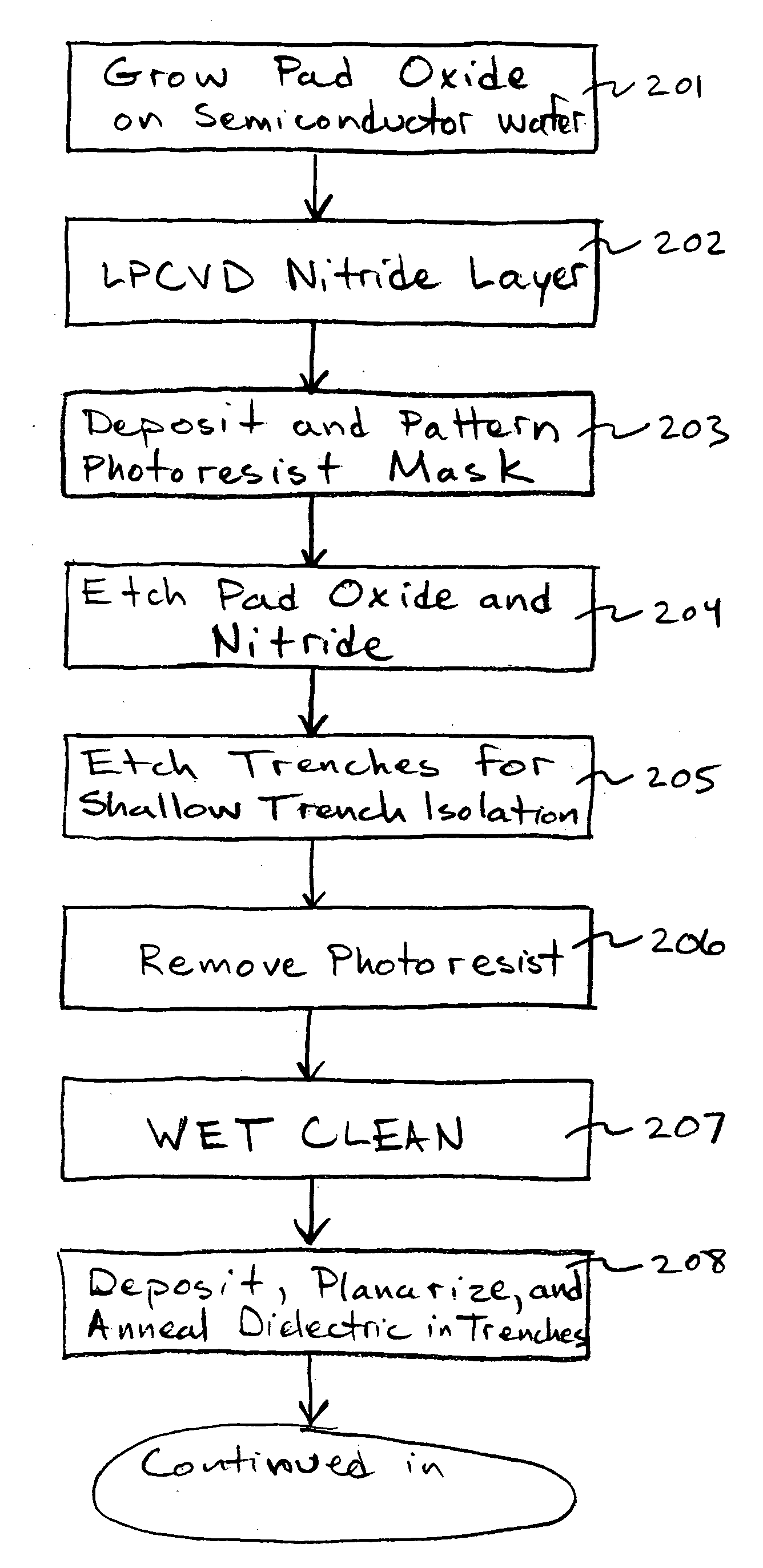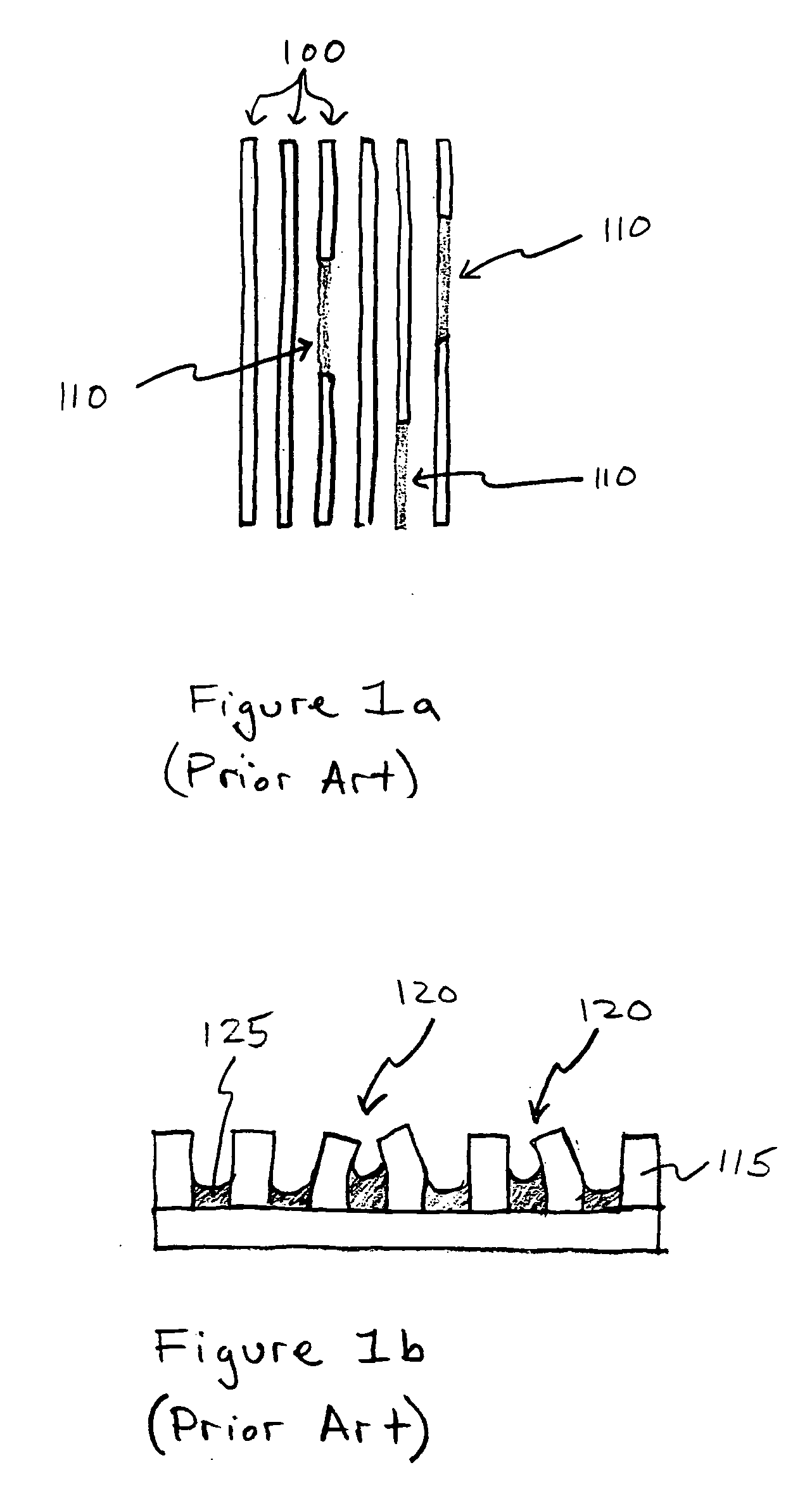Cleaning submicron structures on a semiconductor wafer surface
a technology of semiconductor wafers and submicron structures, applied in the field of semiconductor processing, can solve the problems of affecting the performance of the substrate, so as to achieve the effect of reducing surface tension and expending heat energy
- Summary
- Abstract
- Description
- Claims
- Application Information
AI Technical Summary
Problems solved by technology
Method used
Image
Examples
Embodiment Construction
[0023] In the following description numerous specific details are set forth in order to provide a thorough understanding of the present invention. One of ordinary skill in the art will understand that these specific details are for illustrative purposes only and are not intended to limit the scope of the present invention. Additionally, in other instances, well-known processing techniques and equipment have not been set forth in particular detail in order to not unnecessarily obscure the present invention.
[0024] Fragile structures having a dimension below 0.15 μm and fragile materials such as polysilicon may be cleaned with a cleaning solution in combination with acoustic energy without harming the structures by formulating a cleaning solution from a solvent having a surface tension lower than that of water. This cleaning solution formulated from a solvent having a surface tension lower than that of water may be used to clean structures formed during front-end-of-the-line (FEOL) pr...
PUM
| Property | Measurement | Unit |
|---|---|---|
| frequency | aaaaa | aaaaa |
| depth | aaaaa | aaaaa |
| thickness | aaaaa | aaaaa |
Abstract
Description
Claims
Application Information
 Login to View More
Login to View More - R&D
- Intellectual Property
- Life Sciences
- Materials
- Tech Scout
- Unparalleled Data Quality
- Higher Quality Content
- 60% Fewer Hallucinations
Browse by: Latest US Patents, China's latest patents, Technical Efficacy Thesaurus, Application Domain, Technology Topic, Popular Technical Reports.
© 2025 PatSnap. All rights reserved.Legal|Privacy policy|Modern Slavery Act Transparency Statement|Sitemap|About US| Contact US: help@patsnap.com



